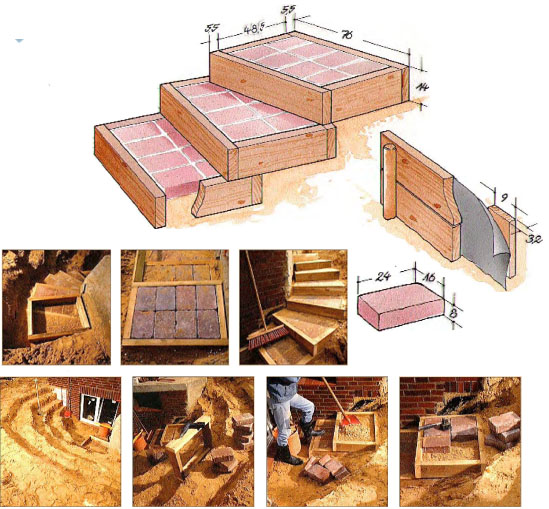 For the upstands of the terrace steps, we used pressure-treated pine planks with a cross-sectional area of 14×5,5 cm and for their support 6 cm thick palisades used. These must be at least twice as long as the upstand (here tight 70 cm). Instead of the planks, palisades can also be placed in a row.
For the upstands of the terrace steps, we used pressure-treated pine planks with a cross-sectional area of 14×5,5 cm and for their support 6 cm thick palisades used. These must be at least twice as long as the upstand (here tight 70 cm). Instead of the planks, palisades can also be placed in a row.
No matter, whether planks or palisades: choose pine! With spruce, the impregnation does not penetrate so deeply into the material, as it will be because of earth touch
got to. Foil strips are attached to the planks, which protect the wood against moisture and as rolled goods (30 cm wide) are available.
The planks are closed with bolts 28 cm width connected. The steps consist of plank frames, which can be filled with clinker bricks or concrete blocks and put together without mortar in the stepped soil or clay.
Spirals are no problem with plank frames: Lay the box steps angled like this on top of each other, that they overhang halfway on the inner flanks. Below: Foil strips protect against moisture.
The window pit is dug and leaves the four – narrowing to the left of the window – Terrace steps already recognize.
The frames for the box steps are nailed or screwed together from four pieces of plank. To the measurements: see diagram.
Fill the box about halfway with sand. Because the layer is still to be compacted, can only be estimated at first.
Insert and align the eight concrete blocks in the box. Hit it with a heavy laying hammer and compact the sand.
For turning, the step on the side that has been swiveled in half covers the one below, visible here in the open frame.
The joints between the concrete blocks are only filled with sand. Stones and wooden frames must form a level.
Each of the steps has a height of 14 cm. Here the steps made of frame elements form a staircase with a left helix.
Concrete from the beautiful side
Sometimes concrete is more attractive than its image: In any case, the "Tegula" stones for the steps are impressive.